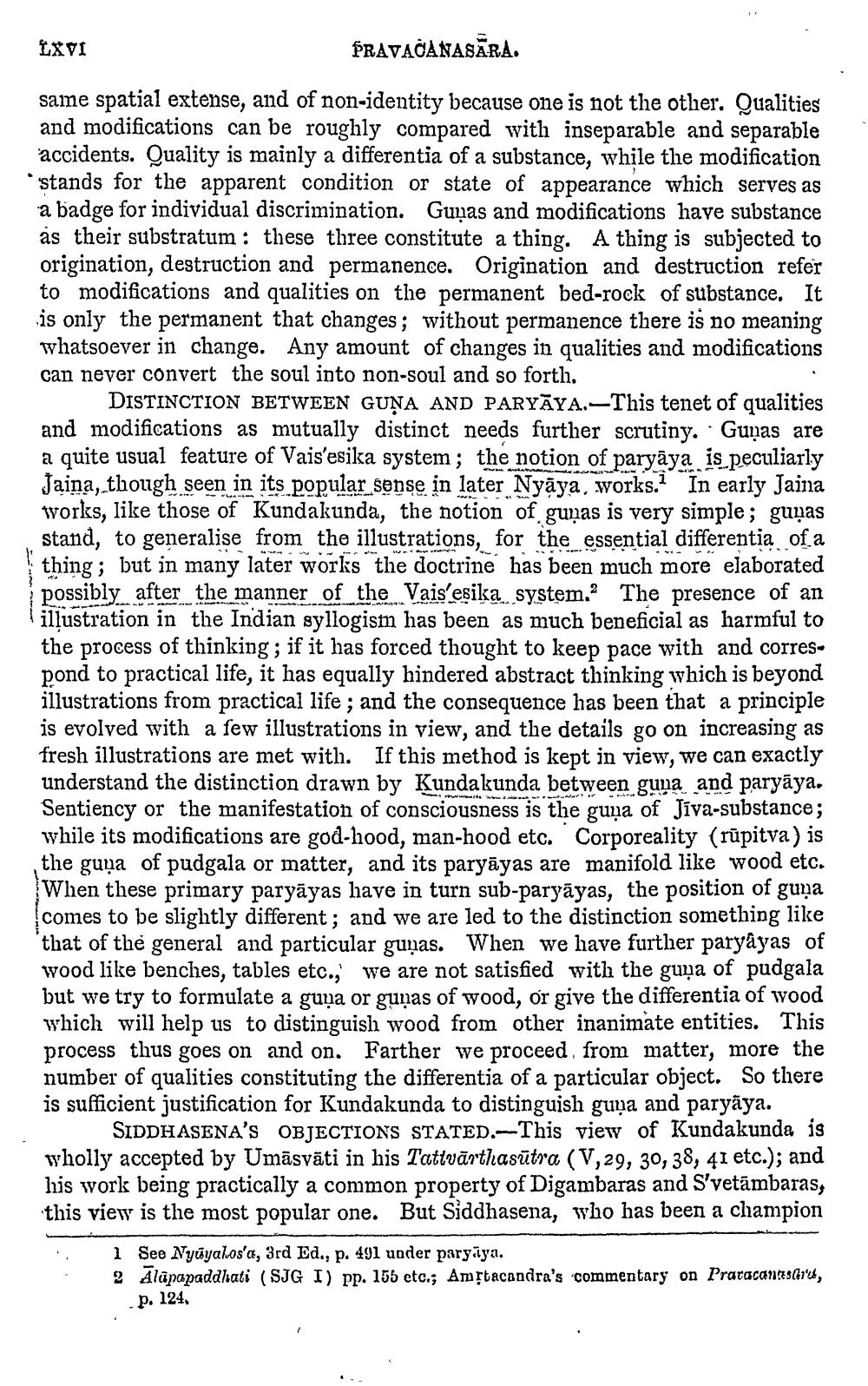________________
LXVI
PRAVAČANASĀRA.
same spatial extense, and of non-identity because one is not the other. Qualities and modifications can be roughly compared with inseparable and separable accidents. Quality is mainly a differentia of a substance, while the modification 'stands for the apparent condition or state of appearance which serves as a badge for individual discrimination. Gunas and modifications have substance as their substratum : these three constitute a thing. A thing is subjected to origination, destruction and permanence. Origination and destruction refer to modifications and qualities on the permanent bed-rock of substance. It is only the permanent that changes; without permanence there is no meaning whatsoever in change. Any amount of changes in qualities and modifications can never convert the soul into non-soul and so forth.
DISTINCTION BETWEEN GUŅA AND PARYAYA.-This tenet of qualities and modifications as mutually distinct needs further scrutiny. Guņas are a quite usual feature of Vais'esika system; the notion of paryāya is peculiarly Jaina, though seen in its popular sense in later Nyāya, works. In early Jaina works, like those of Kundakunda, the notion of guyas is very simple; guņas stand, to generalise from the illustrations, for the essential differentia of a thing; but in many later works the doctrine has been much more elaborated possibly after the manner of the Vais'esika system. The presence of an ilļustration in the Indian syllogism has been as much beneficial as harmful to the process of thinking; if it has forced thought to keep pace with and correspond to practical life, it has equally hindered abstract thinking which is beyond illustrations from practical life ; and the consequence has been that a principle is evolved with a few illustrations in view, and the details go on increasing as fresh illustrations are met with. If this method is kept in view understand the distinction drawn by Kundakunda between guya and paryāya. Sentiency or the manifestation of consciousness is the guņa of Jíva-substance; while its modifications are god-hood, man-hood etc. Corporeality (rūpitva) is the guņa of pudgala or matter, and its paryāyas are manifold like wood etc. When these primary paryāyas have in turn sub-paryāyas, the position of guna comes to be slightly different; and we are led to the distinction something like that of the general and particular gunas. When we have further paryayas of wood like benches, tables etc., we are not satisfied with the guņa of pudgala but we try to formulate a guņa or guṇas of wood, or give the differentia of wood which will help us to distinguish wood from other inanimate entities. This process thus goes on and on. Farther we proceed from matter, more the number of qualities constituting the differentia of a particular object. So there is sufficient justification for Kundakunda to distinguish guya and paryāya.
SIDDHASENA'S OBJECTIONS STATED.This view of Kundakunda is wholly accepted by Umāsvāti in his Tattvārthasūtra (V, 29, 30, 38, 41 etc.); and his work being practically a common property of Digambaras and S'vetāmbaras, this view is the most popular one. But Siddhasena, who has been a champion
1 See Nyüyalos'a, 3rd Ed., p. 491 under paryaya. 2 Alapapaddhati (SJG I) pp. 155 etc., Amrtacandra's commentary on Praracanesi',
. p. 124,




